As barefoot running and walking (and hiking, and kayaking, and anything else you can do barefoot) become more popular, the one question that comes up more and more is:
Will being barefoot or in Xero Shoes cure me of my problems?
And the list of problems includes:
- Flat feet
- High arches
- Leg length differences
- Plantar fasciitis and heel pan
- Achilles tendonitis
- Pain in the ankle, foot, knee, hip, back
- … and a LOT more
This is a good question.
And if you hang out in the barefoot world, you will definitely hear from someone who says that being barefoot cured them of pretty much anything and everything.
So, will being barefoot cure you of what ails you?
The short answer is:
Who knows?
It’s not as simple as: take off your shoes and you’ll be instantly cured of every injury you’ve ever had, able to run without effort for days at a time, and awarded the key to every city you breeze through on your double-marathon-a-day cross country jog.
Running and walking barefoot is an invitation.
An invitation to, first, listen to the sensations in your feet and the rest of your body. And then, secondly, an invitation to change what you’re doing based on that information.
It’s not a contest to see if you can endure pain until “your feet toughen up” nor is it an instant cure-all.
(For the record, if you check out the feet of any good barefoot runner, they are NOT calloused, blistered, or tough. And, for the record, I’m not talking about Kenyans or Tarahumara who grow up doing everything barefoot… that’s a completely different situation than running for 5-50 miles a week in a controlled fashion.)
So, back to the question at hand…
If you listen to your body (that is, pay attention to when something is uncomfortable), and adjust your form, and continue to explore the question, “How can I make this easier, lighter, softer, faster?” then guess what you’ll probably clear up:
Any problems or injuries you had from not doing the above.
If your injuries and aches and pains were caused by bad form, then changing your form to something better could heal what ails you. Seems pretty obvious, yes?
But, again, this doesn’t happen just because you’ve taken off your shoes. It’s possible to be barefoot and still do everything wrong, namely, not listening, and not changing.
Going barefoot, or wearing Xero Shoes gives you an opportunity to listen, to adapt, to explore, and to discover what can happen for you… if you take the opportunity.
Some medical professionals (most of whom, it seems, have never run barefoot at all, let alone on a hard surface) will argue, “There are no studies that show that PROVE the value of barefoot running!”
Absolutely correct.
There are also no studies that prove it causes more problems than running in shoes, even though some medical professionals make that claim.
And it seems that claim is based, as far as I can tell, from their lack of understanding of statistics and sample bias — that is, they only see the ones who are injured, not the ones who aren’t… and don’t know the total number of barefoot runners so they can’t tell if this is more/less problematic than shod running. Plus, again, it’s not just a question of whether someone is running barefoot (or minimalist), but HOW they’re doing it. Besides, there’s no studies that show running shoes prevent injuries either!
Look, I’m not a die-hard “Everyone must be barefoot!” guy. Granted, since 2009 I’ve spent less that 7 days in any footwear other than Xero Shoes or my sprinting spikes (I’m a competitive sprinter). And, yes, running barefoot did improve my form and eliminate a number of injuries that had plagued me. I used to have flat feet and I wore orthotics for 30+ years… now I no longer have flat feet and love that I’m not spending $2-500/year on foot inserts.
But “barefoot vs. shoes” is still a conversation. And a new one at that.
There’s been some suggestive research, but nothing definitive. And this is more a function of how hard it is to do good research than anything else.
I hope the conversation can continue long enough, and with enough attention that we have some real answers, answers that help people run and walk with lightness, freedom, and fun.
The content of this post does not constitute and is not intended to be a substitute for professional medical advice, diagnosis or treatment. Always seek the advice of a physician or other qualified health provider with any questions or concerns you may have about your health or a medical condition.



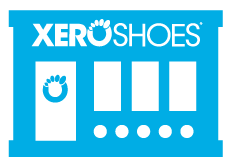
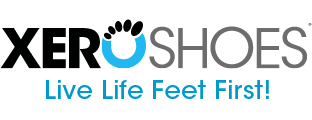

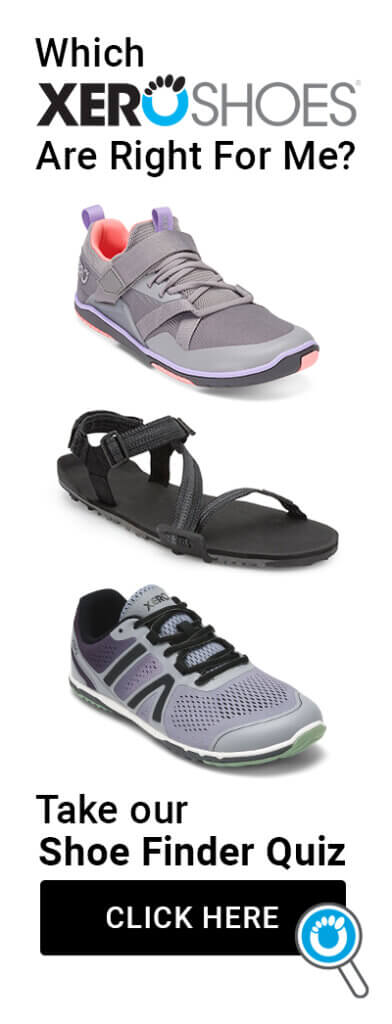



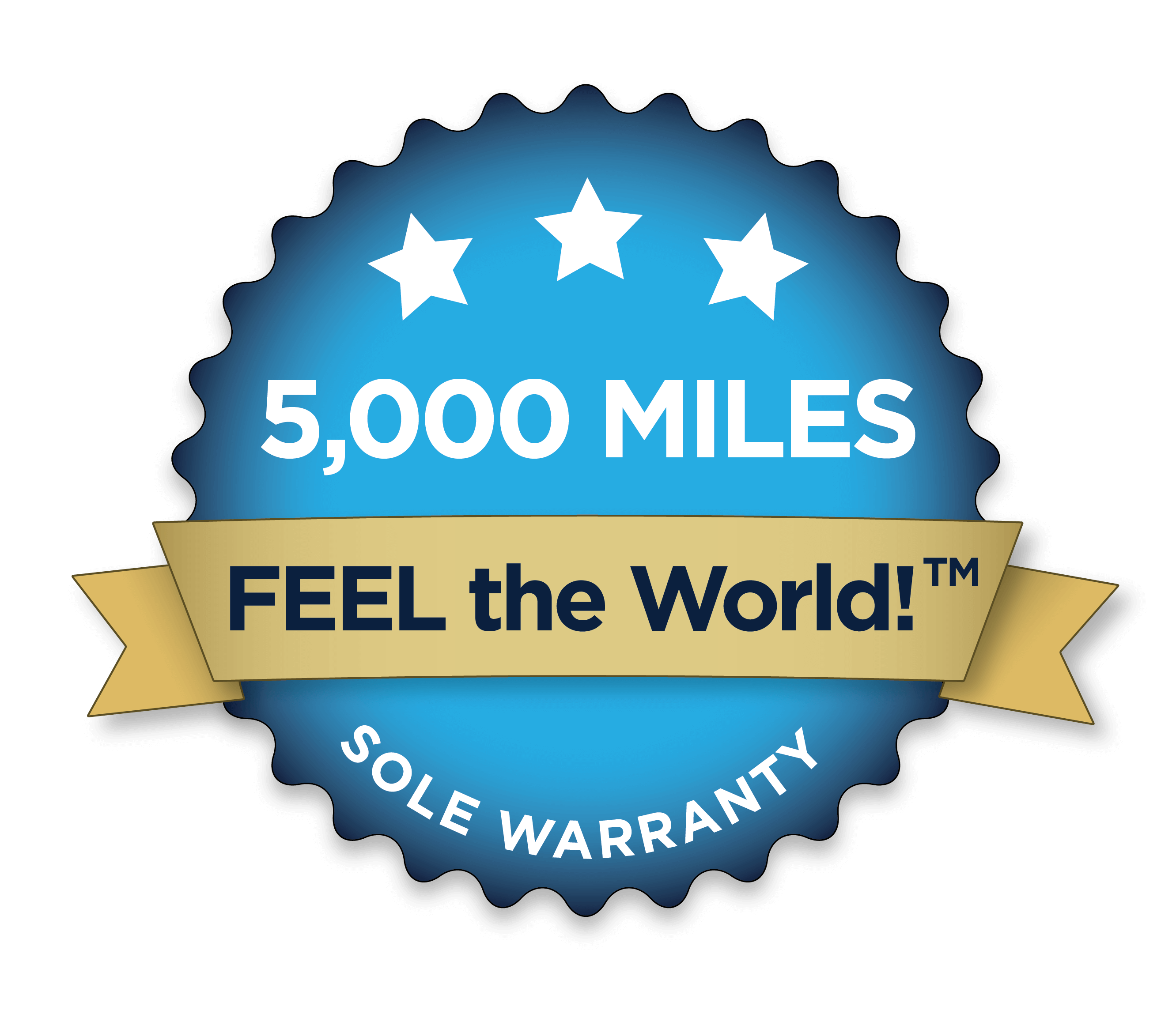
 Fostering honest and responsive relationships between businesses and consumers.
Fostering honest and responsive relationships between businesses and consumers.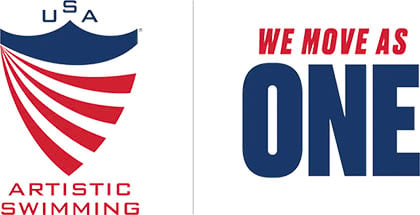













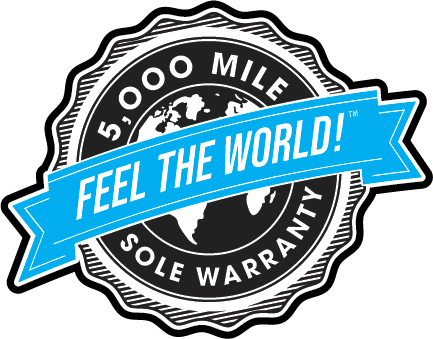
Hi, Steven.
Indeed, studies about injury rate comparing shod and barefoot runners have yet to be published. But, since Robbins and Waked’s 1997 study, it is known that wearers of more expensive athletic shoes suffer twice as many injuries as those who wear less expensive ones. So, even if someone decides not to go barefoot or minimal (give it a try, before discarding it), she should stop buying expensive, useless and dangerous technology.
There’s a nice read here
http://www.sportsci.org/jour/0103/mw.htm
with great reference list.
There is a lot of anedotal evidence that huaraches and barefoot running help us run easier, compared to marshmellow shoes … it definitely stops heel-strikes!
Just want to say thank you for this site … your advice helped me make and use my huaraches.
Hello Steven,
I have been training for a marathon since March that will take place in October. I started running in March of this year with the intent to complete 26.2 in under 4 hours. I bought a pair of Huaraches, and have found them great in training. Even though new technology can increase my speed, I find that injury is more prominent.
Aside, I will be running in shoes in my first marathon with the strong emphasis of training in sandals. My next, the Flying Pig, I may run the full in Huaraches!
Thanks for the knowledge Steven,
-Joe
I learned one thing. I was running barefoot/huraches for aboutu seven months. When we got a colder winter with more snow than normal, I was trying to build up my mileage for a marathon and went back to running shoes. My foot got sore. I went back and forth trying to ease the pain, but ended up with the worst sore foot I ever had (plantar faciitis)sp. I’ve had shots, wore a boot, taped it a special way and wore orthotics and its still sore and my running has be almost nil. Try one thing and stick to it, is what I learned. I should never have gone back to shoes.
I probably misunderstood the barefoot running advise on the internet but there was so much emphasis on not doing the heel strike that I ended up putting too much weight on the ball of my foot and got a stress fracture in one of the delicate bones there. It seems from internet forums that a lot of people have this happen to them so there may be a general misunderstanding out there about it. I now believe that the heel should bear most of the weight but only when the heel is under the body. The heel shouldn’t strike the pavement first, as shod runners do, but it should bear the majority of the weight of the step.
One thing that hasn’t been fully explored in the barefoot community is that there are a handful of teachers who each teach a different style of barefoot running. Some do suggest that you land on and stay on the ball of the foot. Others suggest that you land midfoot. Some suggest that you land on the ball, but then quickly let the heel drop and be basically flat-footed. Each of these styles will have different effects for different runners. And, sometimes, each of those styles may be more/less useful for different kinds of running.
Even more, *where* you land may not be as important as *how* you land. That is, I’ve seen people who land on the ball of the foot by practically SLAMMING their foot on the ground (actually, what they’re doing is landing with stiffness in their ankle, knee and hip rather than letting those joints absorb the impact).
So, like I say in that other post, running barefoot is more than just taking off your shoes and running.
After reading the book “Born to Run” I became very interested in barefoot running. Last year I trained and ran a half marathon and developed foot pain in the full marathon training that followed. I had to drop out to give my foot time to heal. This was when I was still wearing expensive shoes. The idea of barefoot running made sense to me because I am always barefoot and only wear shoe when I have to (getting used to running shoes made my feet feel sore in one place or another all the time).
So when I started my running again I just got out my moccasins and have completed 11 miles up till now. I took the advice of going slow with my training and have had good results with my form and no pain. I use the ChiRunning techniques I learned in Danny Dreyers workshop. I love that I really feel in touch with the ground/road texture. I feel better grounded. I’m still learning and growing as a runner, but at this point I may not ever put on another pair of expensive running shoes again.
Le Tortuga: I had PF and it’s easily treatable by rigorous taping. I found if I ALWAYS tape before I run, I would not get it at all.
The taping was the key: you use brown lukotape p. Hard to get at a store, easy to find on the Internet. Some physical therapy shops will sell it to you.
I used to just tape three strips from below the toes to the ball of the heel but then I change to an X pattern from the ball of the foot below the toes to around the heel. It really tapes the pressure of the tendon (plantar fascia) and cures the problem and prevents it from re-occurring. Good luck. Email me if you need more specific instructions at:
TomosranATaol.com (Use @ symbol instead of AT.)
Regarding your email about whether Barefoot Running heals or harms the body or feet. Shoes almost led me to have a complete knee replacement never mind the on going deterioration of my spine into scoliosis and the twisting and tilting of my hips and foot arches tilting in 2 diff directions (one collapsed and the other overly rigid and leaning outwards.
Barefoot Running eliminated all of the above! Yes, all of it! The real truth is Bare Feet are the ultimate sensory loop for the body to self correct it’s own biomechanics. No sole covering including huaraches can replace skin to pavement for perfecting gait mechanics. I use my Invisible Shoes for trails of jagged rocks and thorns or extreme temps. Otherwise I am barefoot <3
Can only speak for my self. Have been running since I was 13, I am now in my mid 40’s. The last 2 years my running was going nowhere because of constant nagging injuries, knees, ankles, heels hips, if it wasn’t one thing it was another. I wasted a lot of money trying different styles of shoes. Finally I decided to try barefoot running last spring. I haven’t run in “shoes” since early June. I alternate between barefoot, Huaraches, and vibram fives. No injuries, except for some achilles soreness, which is going away with strengthening exercises. I ran my second fastest Marathon this September in Vibrams and am currently trying more and more in huaraches because I love the feel of them.
I think that the best evidence for the benefits of barefoot running resides in our shared history. We didn’t evolve with shoes on our feet and we couldn’t have survived very long as a species if we were constantly nagged by foot/leg injuries (since it’s fairly clear that we developed as ultra long distance runners).
Well I am only 15 turning 16 in Nov., but I know one senior at my school who runs without shoes. HE is not our best runner but, he is one of the best! I have walked around without shoes a couple of time and I feel so much better, without wearing shoe! There is a complete difference for me…I am going to try to run without shoes to see if I can run longer, run faster, and run stronger!
I’ll the reading, interviews and research on barefooting I’ve done has lead me to one conclusion… Every single person is meant to run a different way at different paces at different times. One thing thats consistent with the kenyans and raramuri that I saw is that they have amazing posture have spring like loaded legs and almost seem like they are trying to run as quiet as possible with real high cadence. Te thing I absolutely love about my invisible shoes is they let you be you and run the way YOU were mean to run if you let them coach you. I use mine for anything n everything along with five fingers and occasional naked feet if I find a clean area( I live in LA). my main advice to any one wanting to try it is yes look for get as many tips as you can but in the end the best information you can get is right underneath you.
My experience:
I am 65 years old. I ran track and cross country 50 years ago in high school with a coach who taught us”ball-heel-ball”. That was my style until modern shoes turned be into a heel striker.
A few years ago, I developed a very sore right knee. If I ran a quarter of a mile on a treadmile at 6.3 mph, I could hardly walk the next day.
About six weeks ago I started barefoot running. I have done quarter miles at 7.0, 8.0, and 9.0 mph, plus a short sprint at 10 mph on a tread mill. Reverting back to “ball-heel-ball” has been automatic. My knees have not bothered me at all.
The balls of my feet are sore, but actually gradually decreasing. I work out with weights one day and run the next, a maximum of two to three times a week running as my feet build up. Right now my feet can handle 20 minutes a workout at just under 6 mph. The goal is 45 minute workouts, 3 times a week, at 6 to 7 mph, with weight training and rowing also 3 times a week.
Whatever anyone else says, I was at the point of needing to stop running because of my knees. Since going barefoot, my knee problems have become non-existant. I am capable of running faster and farther than my current workouts as far as conditioning would allow, but am pushing my feet about as hard as I dare. I could wear shoes while my feet build up, but simply do not want to go back to something that I know caused me injurty.
I have found that working out every other day helps my feet recover between workouts.
I’ve been in the military for 15 yrs. Running, Marching, Jumping out of airplanes, my knees and ankles were done for. I had ortho surgeons telling me I needed new knees and my hips were not far behind. I read about chirunning and was immiediatly intrigued. I thought if I have a chance of not going under the knife this was it. I traded my focus to running correctely and started doing everything I possibly could barefoot or in my VFFs. It took 3-4 months and a nagging acillies injury to get comfortable running. I know no longer need surgery. Now 2 yrs later, I can sit or stand without my hips and back hurting, I can run 6+ miles without pain or fear. Barefoot running took awhile to grow into, but I say it has healed my injuries.
I started running a few years ago and did a 1/2 marathon Oct 09. Then had pain around my knee and could not run more than one mile. Tried barefoot and 5 Fingers and worked up to another 1/2 marathon. Steve is right that paying attention to your feet and changing anything that hurts is very important. I’ve been learning Alexander Technique, which teaches paying attention to your body and changing bad habits. Barefoot/5fingers and Alexander Technique have been terrific together.
I’ve only got 20 miles on my huaraches (it’s still cold here), but they are wonderful and add to the feedback with the slapping noise. Already, the last 5 miles were a little quieter. Can’t wait for warmer weather.
Steven, you perfectly said that barefoot or minimalist footwear gives one the opportunity to interact with the world in a more healthy way. As one who supports the minimalist footwear movement, I have to humbly remember to take it slow and avoid the very injuries we hope to prevent. So, yes, it is possible to injure yourself in an unexpected area while trying to fix a problem somewhere else. Seldom is anything as simple as it seems.
It takes time to rehab our bodies from years or decades of modern “misuse”. Modern conveniences cause most of our dis-eases. Put simply, as a society we tend to treat symptoms rather than solve problems. Wearing huaraches and other minimalist footwear is one of many things we can do to solve health related problems from the feet on up to the core.
When we stop moving due to recurring injuries or chronic pain, we’re headed for the grave, possibly way too soon.
Over the past 20 months or so, I’ve experimented with barefoot running, toe shoes, minimalist trail shoes, many different cross country racing flats, and more recently Invisible Shoes/huaraches. Huaraches are by far the closest I’ve come to the barefoot feel, and, without sharp pain from sticks and stones. It’s important to avoid the abrasions and blisters from the uppers of traditional shoes as well as glass or worse that can hurt us.
Ideally we’d all have safe places to run barefoot, but one of the only places I can find is a complex of soccer fields.
With Chi Running, one focus is on picking up the feet, rather than pushing up off the ground. It’s a subtle but important part of running stride that I keep working to improve. I noticed during my first week of extensive testing of the 4MM huaraches, that they prompt me to pick up my feet more, which prevents the sole from snagging the ground or grass. This helps turn the body into a wheel, that glides along, gravity assisted if we let it.
If our feet hurt, somebody wants to sell us an overdesigned shoe or orthotic type devices to shield us from the real message our body is sending, which of course is to really feel the environment and to react to it properly with an appropriately tuned up body. How can anyone “body sense” the environment with so much padding and protectiong blocking the signals?
In Fall of ’09 I ran my first marathon in my old “combat boot” like running shoes at age 47. I barely finished, hobbling in on one leg and luckily with only pain, not long term injuries. In early 2010, I read Born To Run for the first of four cover to cover readings. Immediately I got barefoot as often as possible and within two weeks, my feet felt better. I could get out of bed, put my feet on the hardwood floor, and magically they didn’t ache. Using a Bosu ball for barefoot strengthening, and running/walking in minimalist shoes caused me to make quick progress, until I hit a wall of pain. Being a slow learner, it took me at least three instances of crashing into a wall of pain at about 15 miles running nearly barefoot to realize the wall was caused by poor running technique,not the minimalist footwear! That’s where Chi Running came in to help me fix the real problems. I read the book, again and again and continue the “practice” of Chi Running. Also invaluable is the book Pain Free by Pete Egoscue, a best seller from 1998. Worth noting is that way back in the late 90’s, both Pete Egoscue and Danny Dreyer, Chi Running author, both pointed out that LESS IS MORE in regards to footwear. So simple, so brilliant. I loved the comment that Danny Dreyer heard from the lady at the Tai Chi supply store regarding footwear. She said the shoes most American’s wear make their feet stupid. Wise lady. Stupid feet make for a stupid reaction to the planet, which causes everything from ankle sprains and foot fractures to hip and knee replacements.
Beware of the C’s. Chairs. Cars. Conveniences!
Proper motion while barefoot or in huaraches are fantastic ways to alleviate the problems caused by the modern C’s.
I’ve learned to be very cautious of comments from well intentioned medical professionals. Most of them are far too busy to have experiemented with some things I’ve learned from Born To Run, such as running marathoning and ultras in minimalist footwear on a 100% plant based diet.
I’m happy to hear some medical professionals asking me some really good questions, and really listening.
What a simple lesson, get smart feet that really feel the world, move a lot and enjoy all the positives.
During 2011, I’ve stuck with a 100% plant based diet for many reasons, one of which is to best fuel muscles, bones and ligaments, and I’m getting ready to attempt a 5th 2011 marathon soon. This will be another 50K trail run, something I couldn’t have imagined doing just a few years ago. For a guy who didn’t consider himself athtletic, I’m feeling stronger, lighter and faster…and I feel like I’m just getting some momentum going.
Randy
I think it’s really dumb that people have to be “educated” to go barefoot, whether it’s running or walking around in the yard or hiking or whatever. Maybe you have to unlearn a few things, after being brainwashed for years that going barefoot is uncivilized/dangerous/dirty etc., but the human body know what’s good for it. Regards–Bill
I recently read the book and now have my running sandals. Previously I had been trying unsuccessfully to lose some flab without running, i.e. calisthenics, race walking, weighted hula hoop, weights. I no longer subscribe to the theory that running is unnatural and risky for humans. After 2 weeks of using my huaraches I feel great and have slimmed down a bit. I still use the hula hoop too to tone my core muscles.
I haven’t ran in 10 years due to an incessant IT band problem in my knee. I was a college distance runner and miss it greatly. My husband saw you on shark tank and thought it would be worth a try. I haven’t ordered a pair yet. I was going to wait for some kind of sale. But the more i read, the more eager i become. I’ve been getting the daily emails and find myself hoping that running barefoot (if done properly) will be my answer. Maybe it will, maybe it won’t but it’s definitely worth a try. I’m so glad you were on shark tank!
Looking forward to hearing what you experience/discover, Lynn!
You are refreshingly honest, straightforward, and down to earth! I’m a beginning runner, but the difference between running in a minimal shoe (I’m using water shoes at the moment, but will likely get xeroshoes soon) and a “running shoe” is dramatic. I’m not jarring every joint with every step anymore. Of course, the first day I ran in minimal shoes, by the time I made it down the block I could tell I had to stop or I would be in terrible pain from muscle soreness for several days. I was sore anyway, but much better now (it’s only been a week). Your posts are very informative, very helpful, and realistic, which is, as I said, really refreshing! I have had flat feet all my life, too, and was laughing at your flat feet blog about the oval footprints because it’s painfully familiar! I’m looking forward to continuing to listen to my body teaching me how to walk and run and hoping for improvement.
Thanks for the compliments, Christine. Very kind of you to say.
I put on a traditional running shoe the other day and could barely walk in it! I can hardly believe that I used to put real miles on those things. 😉
Keep me posted about your progress.
See, I will say it: I used to run in shoes and was injured ALL the time.
Now I run in Xeroshoes, four marathons later and ZERO injuries.
Well, to be fair, sometimes I step on a rock and bruise my foot. But I will say from experience that it did end/cure the following issues I was having:
Back Pain
knee pain
plantar Fasciitis
achilles tendinitis
Patella tendinitis.
Hi Steven
I love my new Xeros. But can you honestly say that barefoot will really improve my piano playing? Traditional shoes didn’t seem to do Jerry Lee Lewis any harm.
Oh, if Jerry were only playing barefoot…
(Back in 1984, I was a stand up comic… and I opened for Jerry in Charleston, SC!)
Has anyone had success with Xeros helping their mortons Nueroma?
Xero Shoes aren’t a medical device. If being barefoot, but with a layer of protection, seems like something you’d like to try, that’s what we do 😉
While humility is wise in that matter, I would suggest a quick survey at https://scholar.google.ca/scholar?q=barefoot+running to get a glimpse of what is known and what is left to uncover.
Great tip, Michel.
I thought I was going to take off my shoes and magically get rid of pain. What I’ve found most helpful on your site is the information that it’s necessary to notice what’s happening in my body and consciously try making adjustments. Thank you!
My pleasure… thank YOU for discovering your best coach (you!)
Do you have any suggestions for exercises to strengthen arches and ankles other than barefoot walking? Even a few minutes seems to be too much for me. I get sharp pains below and behind my ankle; it seems to be the ligaments or tendons which are attaching stuff to my heel, as apposed to the muscles which are sore. I must be doing something wrong…can you point me in the right direction?
If a few minutes is too much, then start with LESS than a few minutes and build up slowly, as your body allows. There are also a couple of good suggestions in this article: http://www.bottomlinehealth.com/no-foot-leg-pain/
Find a foot specialist and ask for X-rays or an MRI. You could also have arthritis or bone spurs . When I FINALLY found a foot specialist who did more than high school and college athletes, the first thing he said was, “You need a bone fusion like, three years ago!” I will never be 100%, but I’m 100% better than I was.
I started going barefoot whenever possible several years ago as alternative to surgery or other interventiaon for a plantar fascia injury. I bought my first pair of Xero shoes to extend the barefoot experience. I just assembled a 4 mm DIY pair after 2 x custom fit pairs. I have no plantar fascia pain .My posture & gate are totally realigned, even when I have to wear hard shoes in the office. If I take time to think about it I am aware I am always running and walkng “naturally” using all muscles from the toes up. Every step is a refreshing workout rather than the enegy drain many people my age whine about.. At rest I almost always feel like I have just had a full foot & leg massage, even when exhausted otherwise. The only pain I have is “good pain” after hard run or walk. Well, I must admit I do occasionally have to manage some injury pain that has much more to do with impulsive, clumsy behavior than the barefoot experience.
(BTW- I am an active 65 year old. Proof you can rebuild, retrain and redevelop the muscles at any age. Takes a little more time now, but my “feel good” is worth every minute)
I started going barefoot and wearing minimalist shoes one month ago after wearing orthotics for flat feet for 25 years. I did this because I was suffering from plantar fasciitis for one month prior while wearing my custom orthotics. At first it was very uncomfortable going barefoot and the plantar fasciitis was not improving. Then I added single leg calf raises every other day, and after one week I am happy to say that my plantar fasciitis is gone and my arches have already dramatically improved. My feet and calves look much stronger! I have now started added some barefoot running to my regimen to further improve my foot health. It has been an amazing transformation for me!
Steven would you suggest wearing Xero Shoes for playing tennis on a hard court? If yes, which model?
We’ve heard from a number of customers who wear the Prio for tennis, even though it’s not a tennis shoe, per se.